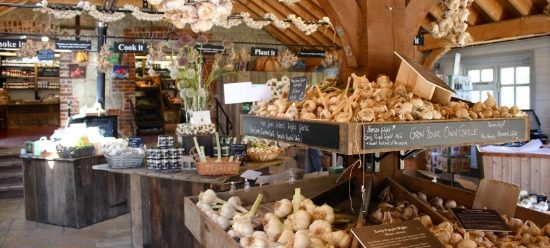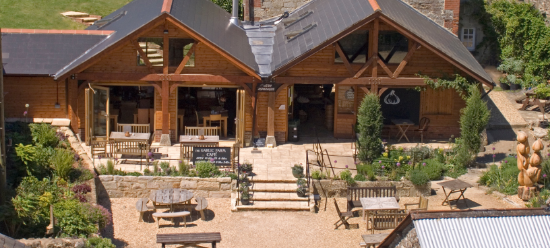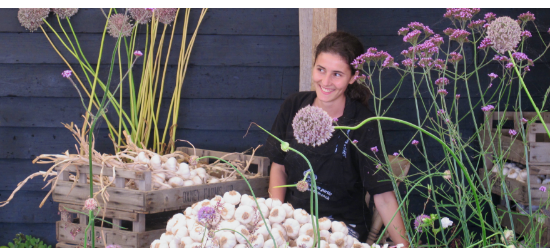
We all know and love the intriguing flavour that garlic brings to our food. From its starring role in buttery garlic bread or fresh pesto, to the subtle but essential kick it lends bolognese sauce or roast lamb, garlic plays a myriad of culinary parts.
What is perhaps less well known is the range of intensity that garlic can bring to a dish. Chicken roasted with forty whole cloves might only receive a mild infusion of garlic flavouring, whereas another dish using just one freshly crushed clove could ward off vampires for days.
The Chemistry of Garlic
It all boils down to the presence of allicin, the sulphur compound responsible for that instantly recognisable garlicky taste. Allicin is made when two substances present in garlic, alliin and allinase, interact - a chemical reaction that only occurs when the cells of the clove are broken down, through cutting, crushing, slicing or (for the brave!) biting. To release its most potent flavour, garlic must be crushed or minced very finely, which triggers the maximum creation of allicin. Slicing or roughly chopping the clove will yield fewer chemical reactions within the garlic cells, thus the resulting flavour will be subtler. Mildest of all is the whole, unpeeled clove, which lends a mellow sweetness to any dish.
But it's not just the way we prepare garlic that effects its strength and complexity of flavour, it's also how we use it. Those all-important garlic enzymes are inactivated by heat, and the allicin compound is destroyed during cooking. So garlic mellows as it cooks, and is most pungent in it's fresh, raw form. While the classic method of sautéing chopped garlic produces a delicious base to many of our favourite dishes, for the punchiest flavour, garlic lovers should add it in the final stages of their cooking.
Acid, such as that present in vinegar or lemon juice, also denatures allinase, preventing allicin being made. So when making a garlic vinaigrette, it's more effective to crush or mince the garlic onto a chopping board, and give it a few seconds for the allicin compound to form, before adding to the dressing mix.
Recipes for a fresh, strong garlic flavour:
Add a few cloves of freshly crushed garlic to mayonnaise for instant aioli - use as a dip, or thin it down with a little warm water to make a delicious sauce for fish.
To gain all the health benefits of fresh garlic after a big night out, add a crushed clove to a Bloody Mary. Garlic is reputed to be an excellent cure for hangovers, and this is one tasty way to consume it!
For the best bruschetta, lightly toast slices of ciabatta bread, brushed with olive oil. When just golden, rub the toasted surface with raw garlic cloves, and pile with freshly chopped tomatoes and basil.
Recipes for a mild, mellow garlic flavour:
Roast whole bulbs of garlic (wrapped in foil or baked in a roasting pot) at 180°C for 1 hour. Serve with roasted meats.
Potato Dauphinoise (sliced potatoes cooked in milk or cream) is wonderfully enhanced with the addition of a few grated garlic cloves, cooked over a long, slow heat.
The blandness of white risotto rice begs for a little assistance in the flavour department, and gently sautéed garlic provides just the right mellow sweetness to elevate a risotto to the truly sublime. Fry some crushed garlic in a little olive oil or butter, until it is soft but not brown. Then continue with your favourite risotto recipe, letting the complex garlic flavours seep into each grain of rice.
For more inspiring ideas on how to cook with garlic, see our cookbook the Garlic Farm Cookbook.






















